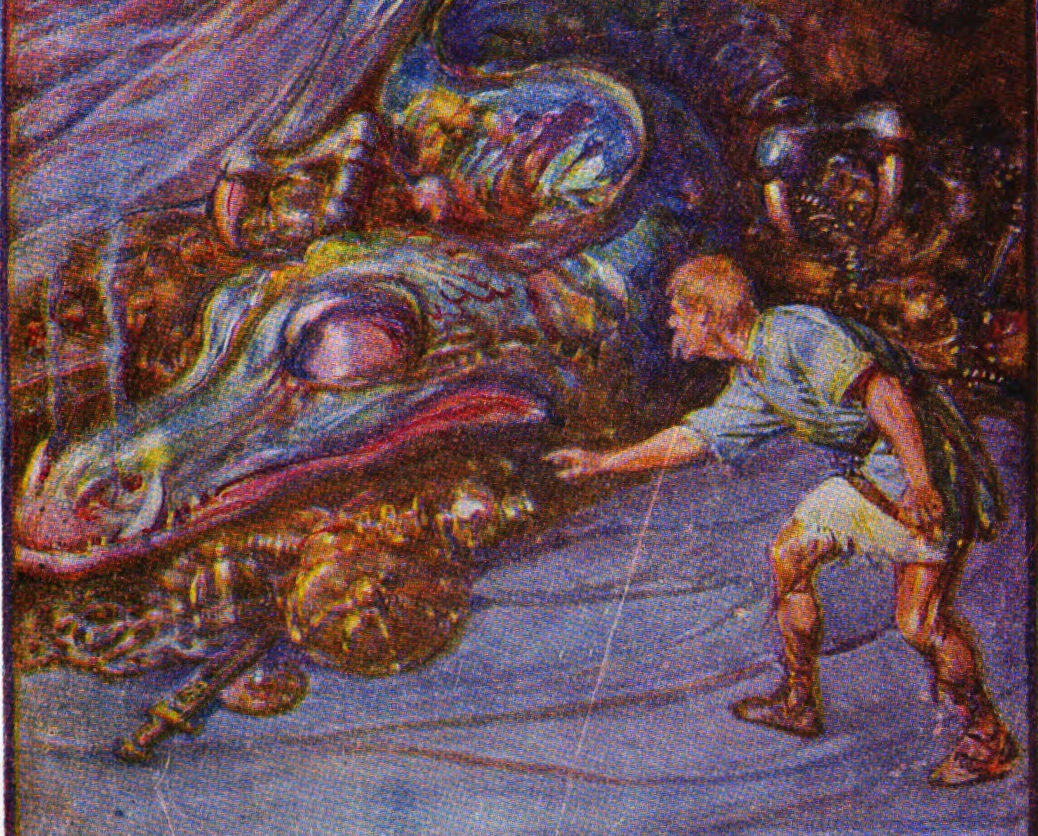28 November 2019
Hamsters and Dragons
Where’s the money gone?
By Neil Tidmarsh
 “Now you see it, now you don’t!” Like a sinister magician, the Credit Crunch waved its magic wand in 2008 and all the money in the world seemed to disappear in a puff of smoke. Everybody’s been looking for it for over ten years now. Down the side of the sofa, in the pockets of forgotten coats and jackets, everywhere. Nothing. So now they’re beginning to shout “Where’s the money gone?”. Their anger is echoing all round the globe – Iraq, Libya, Zimbabwe, Iran, Chile, Ecuador, Colombia – accompanied by the sound of police sirens, broken glass and burning cars.
“Now you see it, now you don’t!” Like a sinister magician, the Credit Crunch waved its magic wand in 2008 and all the money in the world seemed to disappear in a puff of smoke. Everybody’s been looking for it for over ten years now. Down the side of the sofa, in the pockets of forgotten coats and jackets, everywhere. Nothing. So now they’re beginning to shout “Where’s the money gone?”. Their anger is echoing all round the globe – Iraq, Libya, Zimbabwe, Iran, Chile, Ecuador, Colombia – accompanied by the sound of police sirens, broken glass and burning cars.
Everyone’s pretty sure the money hasn’t just disappeared into thin air. It’s out of sight and out of reach, certainly, but it must still be out there somewhere. Who’s got it? Where are they hiding it? Has on-line business sucked it all upwards, out of the hands of millions and into the hands of a few distant and almost god-like individuals? Has it been purloined and dropped into the pockets of corrupt individuals? (Iraq’s defence minister, a major-general who lives and works in Baghdad, was accused this week of fraudulently claiming housing and child benefits from Sweden; Swedish press alleges that he holds a Swedish passport in another name and is registered as a Swedish resident). Has it been purloined by corrupt governments? (Zimbabwe recently published a budget which showed Chinese aid at $36 million; hang on, said China, we’ve given you over $136 million this year; this week Zimbabweans began to ask what’s happened to the balance). Or has it all simply been hoarded away by cautious and frightened individuals and banks and governments, preparing themselves for the next crash?
This column recently related the story of the garage owner from Dortmund who was sitting on a secret stash of over half-a-million euros – until the whole hoard went up in smoke last Christmas (The Cock-up Factor). It suggested that the story might be “a metaphor for modern Germany, a country admired for its wealth creation but often criticised for its reluctance to spend that wealth”. Hot on the heels of that suggestion came comments from Christine Lagarde, giving her first speech as president of the European Central Bank this week. She urged eurozone leaders to increase spending to boost growth in the eurozone’s flagging economy; it’s understood that her words – which strictly speaking went beyond the ECB president’s remit – were aimed at Germany in particular. Annegret Kramp-Karrenbauer – Angela Merkel’s replacement as leader of the governing CDU party – did at least call for an increase in defence spending (something for which her recent defence minister – now the EU commission’s new president – had little appetite) in her speech at the party’s annual conference in Leipzig this week.
The Cock-Up Factor also asked if the garage owner’s story might be “a contemporary example of something deeper and more ancient in the culture”, and your columnist was reminded of that question when he found himself face to face with a curious one-hundred-year-old bank note earlier this week. It was a piece of notgeld (“emergency money”), bank notes printed by German provincial banks to overcome shortages of cash during World War I and the decade of financial turmoil which followed (an early example of quantitative easing, perhaps – no wonder the Bundesbank is wary of the exercise these days). This particular piece of notgeld (which can be seen in an exhibition in the British Museum which runs until next March) was a two mark note printed in Freren, Hanover, and featured a fat and greedy hamster surrounded by a stash of sausages and ham. It was a warning against the sin of hoarding. Indeed, “to hamster” is used as a verb in German meaning “to hoard” and to acknowledge a particularly Germanic instinct. When a politician in Germany suggested that his fellow citizens should “hamster” their way through hard times a couple of years ago, he triggered a national debate about the dubious nature of this trait.
Of course, dragons are an older, more dramatic and psychologically more potent symbol of this instinct than hamsters, and the Cock-Up Factor referred to “all those old Germanic myths, legends and folk-tales about selfish dragons amassing heaps of treasure in hidden places and jealously guarding it against all comers”. Those old stories echoed through the news this week about the heist in Dresden. One of Europe’s most spectacular and valuable collections of antique jewellery is stored in the Green Vault at Dresden’s royal palace museum; its 4000 treasures include the world’s largest blue sapphire and the Saxon White, a diamond worth more than £9 million. Earlier this week, however, thieves somehow broke in and made off with… well, no one is quite sure yet exactly what or how much they managed to grab while they were in there, but Bild has suggested that the stolen items could be worth one billion euros, art experts have said that their value is “immeasurable”, and the authorities have admitted that at least ten 18th century treasures are missing, including a ceremonial sword encrusted with 800 diamonds and a brooch covered with 51 big diamonds and 600 smaller diamonds.
It’s easy to think of the gold and jewels and “dyre swyrd” (precious swords) in the dragon’s hoard described by the Beowulf poet: “In this underground hall there were heaps of hoarded things which once gleamed and rang in days gone by, the treasure of a nation…” As in Dresden, however, a cunning thief breaks in and steals some of the treasure…
Something about the look of the Dresden treasure is somehow off-putting – so much bling, clearly the product of a class which had so much money that it didn’t know what to spend it on at a time when other classes were no doubt taxed to the hilt or even starving. While the theft and the liquidation of its proceeds are of course to be lamented and condemned, one can’t help wondering what that wealth could have achieved if it had been circulated rather than hoarded away. After all, the gold and jewels stripped from the hoards at saints’ shrines in English cathedrals following the Reformation did finance what became the industrial revolution and kick-started the modern age.
But in Beowulf the dragon’s treasure is cursed. It represents death and destruction. It goes back into the ground after Beowulf and the dragon kill each other, buried in Beowulf’s grave where it’s “of no more use to men than in bygone ages.” All such treasure is cursed – in the Nibelungenlied and in Wagner’s Ring Cycle, the Rhine gold destroys all who come in contact with it, dwarfs, giants, dragons, humans and gods alike. Those old Germanic tales aren’t just a warning against dragon-like hoarding – they’re a warning against the corrosive and corrupting power of material wealth, however one found it or whatever one did with it.
Perhaps hidden away underground – where gold and jewels come from in the first place – is the best place for treasure. After all, the industrial revolution hasn’t exactly been an unqualified success, has it? Climate change and imminent environmental disaster appear to be among its unwelcome and unforeseen side-effects.
Perhaps someone, somewhere, knows where all the money has gone but has decided it’s better that it remains hidden. Perhaps he’s even set a dragon to guard over it to save us from its curse.


